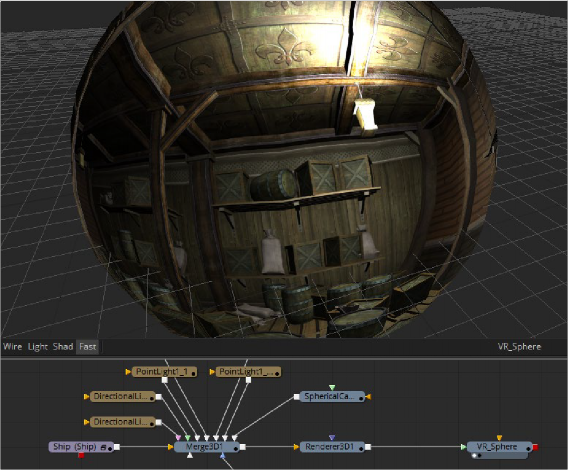
< Previous | Contents | Next >
You can create and fix spherical (360°) video, often described as Virtual Reality, or VR, using Fusion’s set of VR nodes. Dome productions, planetariums, and other special-venue theaters have utilized the flexibility of Fusion and its 3D system to produce and deliver special content for years.

TIP: You can create stereo VR using two stacked Lat Long images, one for each eye.
TIP: You can create stereo VR using two stacked Lat Long images, one for each eye.
TIP: You can create stereo VR using two stacked Lat Long images, one for each eye.
The equirectangular (lat-long) format often used for 360° video is similar to how a globe is represented by a flat world map, with the poles at the top and bottom edges of the image and the forward viewpoint at the center.

![]()
A VR Sphere displayed in the Node Editor and Fusion’s 3D viewer
Fusion supports several common spherical image formats and can easily convert between them.
— VCross and HCross: VCross and HCross are the six square faces of a cube laid out in a cross, vertically or horizontally, with the forward view in the center of the cross in a 3:4 or 4:3 image.
— VStrip and HStrip: VStrip and HStrip are the six square faces of a cube laid vertically or horizontally in a line, ordered as Left, Right, Up, Down, Back, Front (+X, -X, +Y, -Y, +Z, -Z) in a 1:6 or 6:1 image.
— LatLong: LatLong is a single 2:1 image in an equirectangular mapping.